Brent Hodgson writes sales copy that converts. Seriously converts. In part 1 of a two-part interview we did with Brent (there was just so much to cover) we dig deep on how to write sales copy that actually gets your prospects to sit up and take action:
- When we talk about “copy”, what are we talking about, and why do business owners need it?
- What are the big problems business owners face when writing copy?
- So, where do you start? (Copy isn’t hard – but there are 4 big mistakes business owners make in their copy).
- 3 Keys to Good Copy.
- The first 3-steps of 7 to writing great sales copy.

Small Business Big Marketing – Links & Resources Mentioned In This Episode
Flying Solo – Australia’s largest community of soloprenuers.
Zentester – Brent’s website testing tool
Leave a review on Small Business Big Marketing in iTunes.
And here’s Brent’s 7-step process on how to write sales copy. Seriously good, high-converting sales copy.
Writing Sales Copy
This is the process Brent Hodgson from ZenTester uses to write sales and marketing copy.
It’s an effective step-by-step process for any type of copy – although you will need to cut down the end output to suit your needs.
1. Bullets
The best place to start writing copy is by working out what you’re selling.
Start by listing every feature about your product or service on 3×5 index cards. (You can buy index cards at most newsagencies.)
Example:
If you’re selling golf clubs, a feature of one of your golf clubs might be the perfectly weighted alloy head.
By the time you’ve finished writing down the features of your product, you might find you have several hundred features. This is great! Perhaps for the first time, you can see a list of the “things” that people want to buy inside your product or service.
The next step is to work out what is special about each one of these “things” – or what the benefit is of each of these features.
Example:
Using the example feature of the perfectly weighted golf club head, the benefits for this feature might be more distance, more accuracy, more power and less strain in your swing.
If you’re a financial planner, one of overlooked features of your service is that you are subject to Continuing Professional Development, that all financial planners must undertake. Some of the benefits of this might be that the customer can have confidence your skills are up to date, you are aware of the latest risks and opportunities in the market, and you will invest their money wisely.
When you’re done, you’ll have something that you can easily turn into a feature-benefit bullet point.
Example: All pastries are baked fresh on the premises daily – meaning they’re even warmer and sweeter with the first bite. 24 hour monitoring of your alarm system – so your family, and belongings, are secure from intruders – even when you can’t be there to protect them yourself
These bullet points will form the meat of your marketing sandwich.
2. Problems
This is where we put pen to paper and write the introduction to your sales copy.
Look over the list of bullet points you’ve created, and pick the BIG benefits – the big reasons why customers pick your product over alternatives.
Then flip that benefit into a pain point.
Example:
If people buy from you more often because you’re more reputable than your competitors, it’s because of fear, uncertainty and doubt about your competitors.
If people are buying your $1,000 coffee machine, instead of going to Starbucks, the local latte shop, or buying a $200 coffee machine, then it’s likely that they want to avoid the pain of getting bad coffee, the cost of buying coffee from coffee shops, and the hassle of going out to get coffee (when some benefits of your coffee machine might be the convenience of getting high quality coffee at home).
Or if you’re an electrician who arrives on-time, cleans up after themselves, and charges fairly – talk about the pain of messy, late, unprofessional and expensive.
List these pain points – and then turn them into a “pain story”, focussing on the problems your customer will face, and the benefits they will miss out on, if they don’t buy your product.
This story will grab the attention of potential customers, and prepare them to buy by reminding them of the reasons why they need to buy from you.
Example:
Using the electrician example from before, you might end up with a story like:
“When you pick an electrician – how do you know you have the right one?
You pick an electrician out of the phone book because you want a new light switch installed. They say they’ll be there on Saturday morning (later than you want), but you grit your teeth and say “OK”.
Saturday morning comes and goes… And so does most of the afternoon. And suddenly, the electician rolls up – disorganised, smelly and dirty and straight from his last job, trudging muddy blundstones across your clean floor.
They make a hole in your wall for a new light switch, and whack the wires together as quickly as they can, and finish the job – leaving plaster dust on your floor.
But before leaving, they make sure they slap you with a bill so big it makes you feel like you’re passing a kidney stone.
Later that night, it strikes you… He hardly seemed to be paying any attention when wiring up the new light switch… It seemed to be a slap-up job… And they weren’t even dilligent enough to call ahead to let you know they were running late (by several hours!)…
So how do you know they’re diligent enough to the job right?
There could be electrical wires inside your walls and ceiling that are now a dangerous fire or electrical shock hazard – putting you, your belongings, and your family at risk!”
(At this point, your headline practically writes itself… Perhaps something like “Don’t make these mistakes when picking the an electrician…” or “Get the right electrician, and get the job done the right way” or perhaps“Are you putting your family at risk by hiring the wrong electrician?”.)
3. Offer the Solution
Now that you’ve built up the pain of not buying your product, they’re practically begging for a solution for all the pain they’re reading about.
Now’s time to swoop in like Batman to save the day, and show the customer your product.
(Suddenly, you’re no longer “selling” to them. Instead, you’re just person who happens to offer the solution to their problems. Aren’t you a nice guy!)
Remember those feature-benefit bullets you wrote? Do you see why you wrote them now? It’s a laundry list of solutions to all of your customer’s problems, and they’re a great way to demonstrate the value of your product to customers.
Combined with all the fear, uncertainty and doubt your customer has about alternatives and competing products, they’ll be at your whim – unable to resist your product.
4. Call to Action
It’s time to tell them what to do right now…
- “To book now, call {phone number} and register your spot with {person’s name}.”
- “Click on the button below to get your copy now.”
- “Enter your details below for a free measure and quote.”
- “Click here to download now.”
Lay it out for them in precise detail. Tell them what to do, when to do it, and what they can expect after doing it.
5. Give them a reason to act now.
You’re so close to a sale – so make sure you don’t let them get away!
Tell them why they need to act immediately by showing them that your product is legitimately scarce. (I say legitimately scarce, because you should never lie in your sales copy.)
How do you find legitimate scarcity? Every business has constraints. Think about yours:
- A limited number of appointments available each week;
- A 2-week waiting list for appointments;
- Only 2 units left of an item in your warehouse;
- You have a BAS due on Friday, and you need to make some quick sales with a special offer;
These are all great reasons for customers to act now.
If you can’t think of anything, manufacture scarcity:
- A 40-hour special to celebrate your 40th birthday;
- You’re testing a new special offer for the next two weeks to see if it increases sales;
- You want to reward action-takers who buy within 48 hours with a special offer;
Whatever your scarcity is, be a person of integrity and keep your word. (If you say an offer is only available for 7 days, make sure it expires on the 7th day!)
With the right sales copy, you’ll wield a lot of power and influence over your customers – so much that they will literally end up begging to buy from you (particularly when they miss out on a good special offer.)
But if you use this power without integrity to “play” your customers instead of helping them, they’ll never forgive you.
6. Polish Your Copy!
Congratulations! You’ve written some great sales copy – and you can stand back and admire your work.
But before you start using it, there are some simple “tweaks” you can apply to good sales copy to make it work even better.
These “tweaks” are based in sound psychological principles of influence:
- Authority
- Social Proof
- Contrast, and
- Removing Obstacles
Authority
- Show them your awards, licenses, qualifications, industry accreditations;
- Add a security icon to your site, reassuring customers their details are safe becuase your site uses 128 bit encryption;
Social Proof
- Scatter testimonials from happy customers throughout your sales copy;
Contrast
- Contrast your price against more expensive alternatives (including the cost of inaction!);
- Contrast your product against the results customers will get from less effective competing products;
- Do a side-by-side comparison;
- Show them their annual savings over 12 months;
- Show them how much their business might improve over the next 12 months with your product;
Remove Obstacles
- Make your shopping cart easy to use;
- Take away long queues when people call to place an order;
- Provide a trial offer;
- Provide a money-back guarantee;
- Offer a payment plan for expensive products;
7. Test it!
How do you know whether your copy is any good? …How do you know if it can be any better? …How do you decide between two, or three different ideas for your marketing copy?
Split testing is the “secret sauce” top marketers use to make sure they always make the right decisions, and get the best results from their copy.
To split test your copy, split your customers into 2 (or more) groups and send different versions of your marketing copy to each group.
By tracking and measuring which version results in the most signups, enquiries, quotes or sales.
If you’re split testing your website marketing copy, easy-to-use software (like Brent Hodgson’s ZenTester software) helps you to split test your marketing copy, and make more sales effortlessly.
If you’re writing copy for your website, improving your results using a tool like ZenTester will help you to dominate your competitors when it comes attracting customers (and making sales!) online.
Small Business Big Marketing listeners can grab a free 30-day trial of the full Gold-level features for free by signing up here. (Valued at $299 per year.) Be quick, and get yours now – becuase this trial offer won’t be around forever!







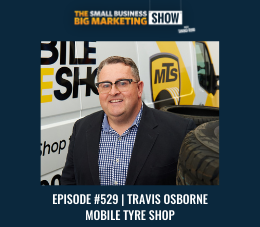
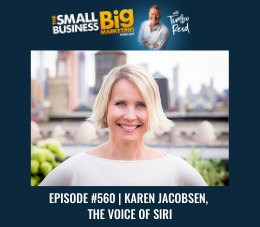

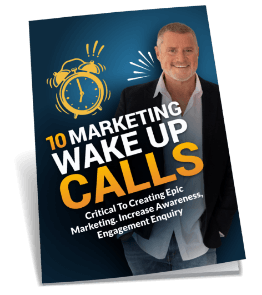
 Grab My 10 Marketing
Grab My 10 Marketing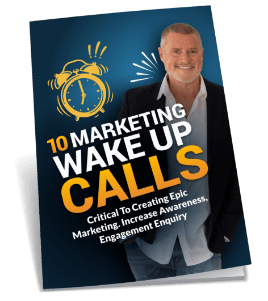
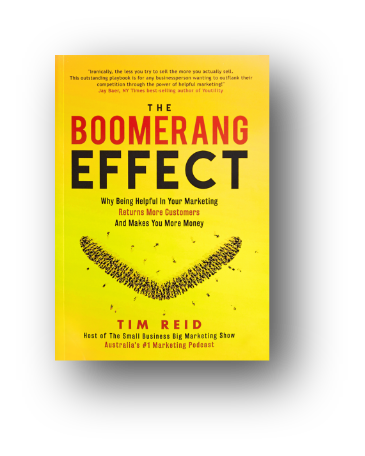
5 thoughts on “#61 How To Write Sales Copy (Part 1).”
I couldn’t find the link for this on Google Listen… please help?
I couldn’t find the link for this on Google Listen… please help?
its a podcast. You need to download it through iTunes.
Brilliant episode guys well done, took a bocket of notes during both episodes – then found the show notes! More episodes of this type would be fantastic. Again great work
Brilliant episode guys well done, took a bocket of notes during both episodes – then found the show notes! More episodes of this type would be fantastic. Again great work